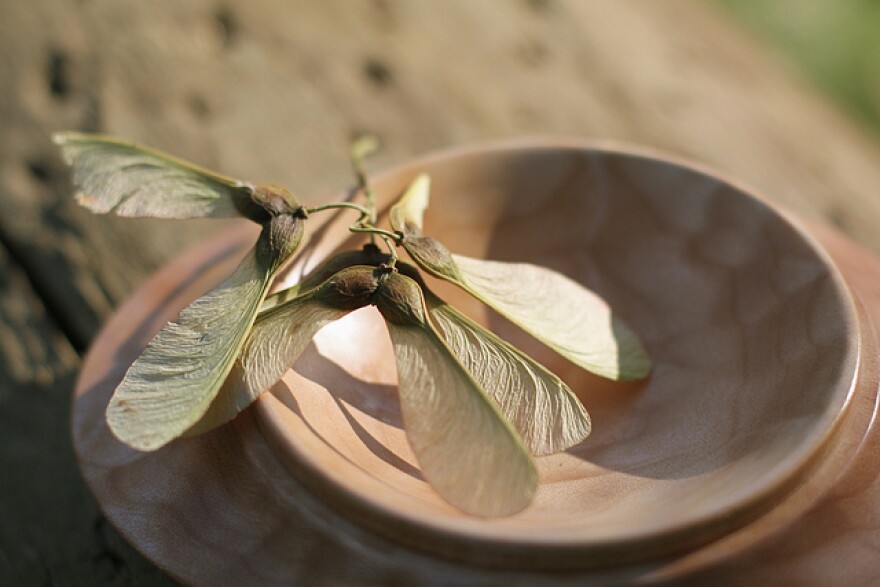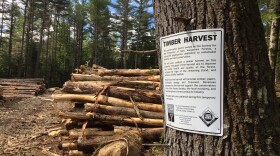Spring blossoms of our largest plants - woody trees - are small and inconspicuous. Trees flower early - before leaves emerge. While showy wildflowers on the forest floor rely on specialized insect pollinators, forest trees do not.
Trees rely on wind-pollination of flowers to yield summer seeds and autumn nuts. Flowering before leaves emerge ensures greater air circulation among pollen-producing male stamens and female pistils containing ovaries.
While tiny treetop flowers of huge beech, birch and maples are hard to see, right now the forest floor is littered with spent flower parts.
American Beech is "monoecious." Both male and female flowers develop on the same tree as the leaves just begin to emerge. The blooming period lasts about a week when flowers are cross-pollinated by wind. Fertilized female flowers develop into beech nuts inside prickly green husks by late-summer.
Birches also have male and female flowers on the same tree. Male flowers appear at the end of summer as green clusters of erect 2-inch long catkins. Male catkins overwinter, turn golden brown and grow longer in spring before releasing microscopic wind-blown pollen which fertilizes flowers. In May, female birch flowers emerge from the scaly buds appearing as stubby catkins shortly before male flowers release pollen.
Sugar maples burst open with a conspicuous neon-yellow display often mistaken for leaf-out. Pastel-pink washes over wetlands as red maple flowers bloom. Branch and leaf buds also break dormancy just as blossoms reach full bloom. Small female maple flowers are borne in tiny clusters at the end of long dangling stalks that develop into familiar, single-winged seed samaras which spiral to the ground in summer.









